Yichun Shu Rui Tu: An Illustrated Album of Auspicious Spring Scenes (亿春书瑞图册)
Overview
This 10-panel silk album, titled Yichun Shu Rui Tu (亿春书瑞图册), was painted by Liu Quanzhi (刘权之, 1739–1818), a Qing Dynasty scholar-official and disciple of the famed writer Ji Xiaolan (纪晓岚). Commissioned during Emperor Jiaqing’s reign (r. 1796–1820), it celebrates imperial prosperity and agrarian harmony through symbolic scenes of spring. Each panel pairs meticulous gongbi (工笔) brushwork with Jiaqing’s poetic inscriptions, blending art, governance, and cosmology. Now housed in Taipei’s National Palace Museum, the work exemplifies Qing court art’s fusion of aesthetics and political ideology.
Structure & Symbolism
- Panels and Themes:
Each panel centers on a wan (万, “ten thousand”) motif, symbolizing universal abundance under imperial rule:
| Title (Chinese) | Translated Title | Symbolism |
|---|---|---|
| 萬戶春聲 | Ten Thousand Households’ Spring Sounds | Celebrates Lunar New Year festivities: children lighting firecrackers, neighbors exchanging greetings. Reflects communal joy and renewal. |
| 萬畦甘雨 | Timely Rain on Ten Thousand Fields | Depicts farmers tending crops under nourishing rain, symbolizing agricultural prosperity and Heaven’s favor. |
| 萬家絃誦 | Ten Thousand Homes’ Study and Music | Scholars teaching children, highlighting Confucian education as the foundation of governance. |
| 萬派安瀾 | Calmed Rivers of Ten Thousand Branches | Rivers flowing peacefully, representing flood control and ecological balance under imperial stewardship. |
| 萬驛橐弓 | Arrows Sheathed at Ten Thousand Posts | Trade routes bustling with merchants, symbolizing peace and economic unity across the empire. |
- Artistic Technique:
- Medium: Ink and color on silk, with gongbi detailing emphasizing architectural precision (e.g., layered city walls in 萬戶春聲) and natural textures (e.g., misty mountains in 萬畦甘雨).
- Composition: Combines vertical scroll aesthetics with Western-inspired depth, as seen in the receding river perspective of 萬派安瀾.
Cultural & Historical Context
- Imperial Propaganda:
The album aligns with Jiaqing’s efforts to project stability after the turbulent White Lotus Rebellion. Scenes like 萬邦獻賮 (Tributary States Presenting Treasures) visualize the Qing’s “All Under Heaven” (天下) ideology, showing envoys from Korea, Vietnam, and Tibet offering tribute. - Poetic Dialogue:
Jiaqing’s poems reinterpret classical texts. For example:- 萬井豐登 (Abundant Harvest Across Villages):
“三時勤苦憫蒼生,春種夏耘秋始成”
“Three seasons of toil pity the people; spring sowing, summer weeding, autumn’s yield”
Echoes the Book of Documents (尚书) on agrarian governance.
- 萬井豐登 (Abundant Harvest Across Villages):
- Comparative Legacy:
Similar to Kangxi’s “Gengzhi Tu” (耕织图, Agriculture and Sericulture), this album merges art with statecraft. Its focus on “ten thousand” motifs influenced later works like Qianlong’s Southern Inspection Tour.
Translation Strategy
- Key Terms:
- Retain pinyin for culturally specific terms (Yichun Shu Rui Tu, gongbi) with explanatory subtitles.
Example: Yichun Shu Rui Tu (亿春书瑞图册, An Illustrated Album of Auspicious Spring Scenes). - 萬驛橐弓: Translate as Arrows Sheathed at Ten Thousand Posts with a note: “Symbolizes peace and secure trade routes under Qing rule.”
- Retain pinyin for culturally specific terms (Yichun Shu Rui Tu, gongbi) with explanatory subtitles.
- Poetic Adaptation:
Preserve classical allusions while adjusting meter. For instance:- “駢闐吉爆宣韶律” → “Crackling fireworks herald spring’s rhythm” (from 萬戶春聲).
- Visual Glossary:
Include a map of scenes with symbolic annotations (see table above) to clarify themes like “Confucian governance” or “ecological harmony”.
Artist Biography: Liu Quanzhi (1739–1818)
A Jinshi (进士) scholar of 1760, Liu rose to become Minister of Rites and a key figure in the Hanlin Academy. His works, characterized by precision and allegory, reflect his dual identity as a bureaucrat and artist. Though less renowned than his mentor Ji Xiaolan, this album cemented his legacy as a bridge between literati ideals and imperial propaganda.

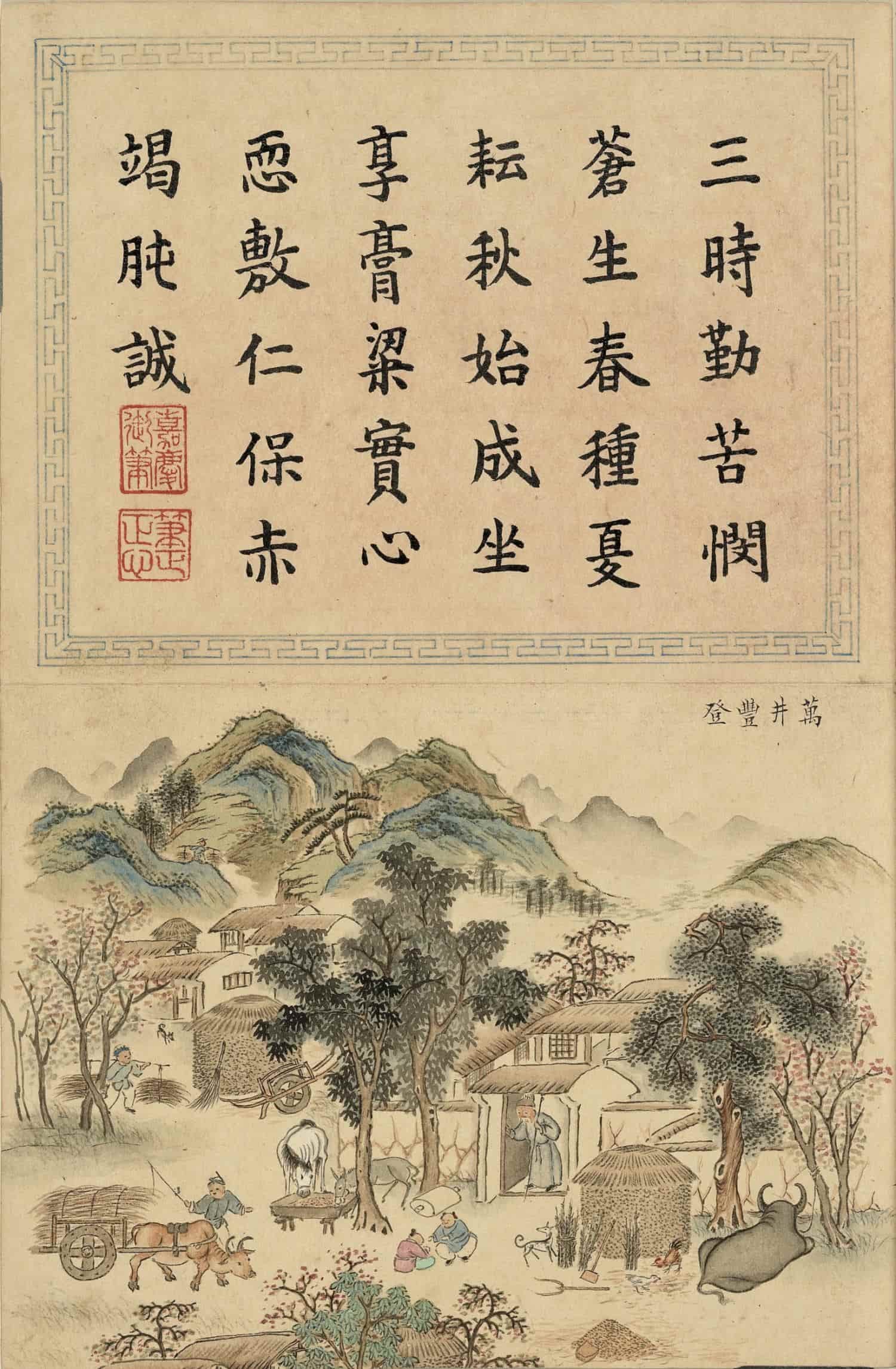
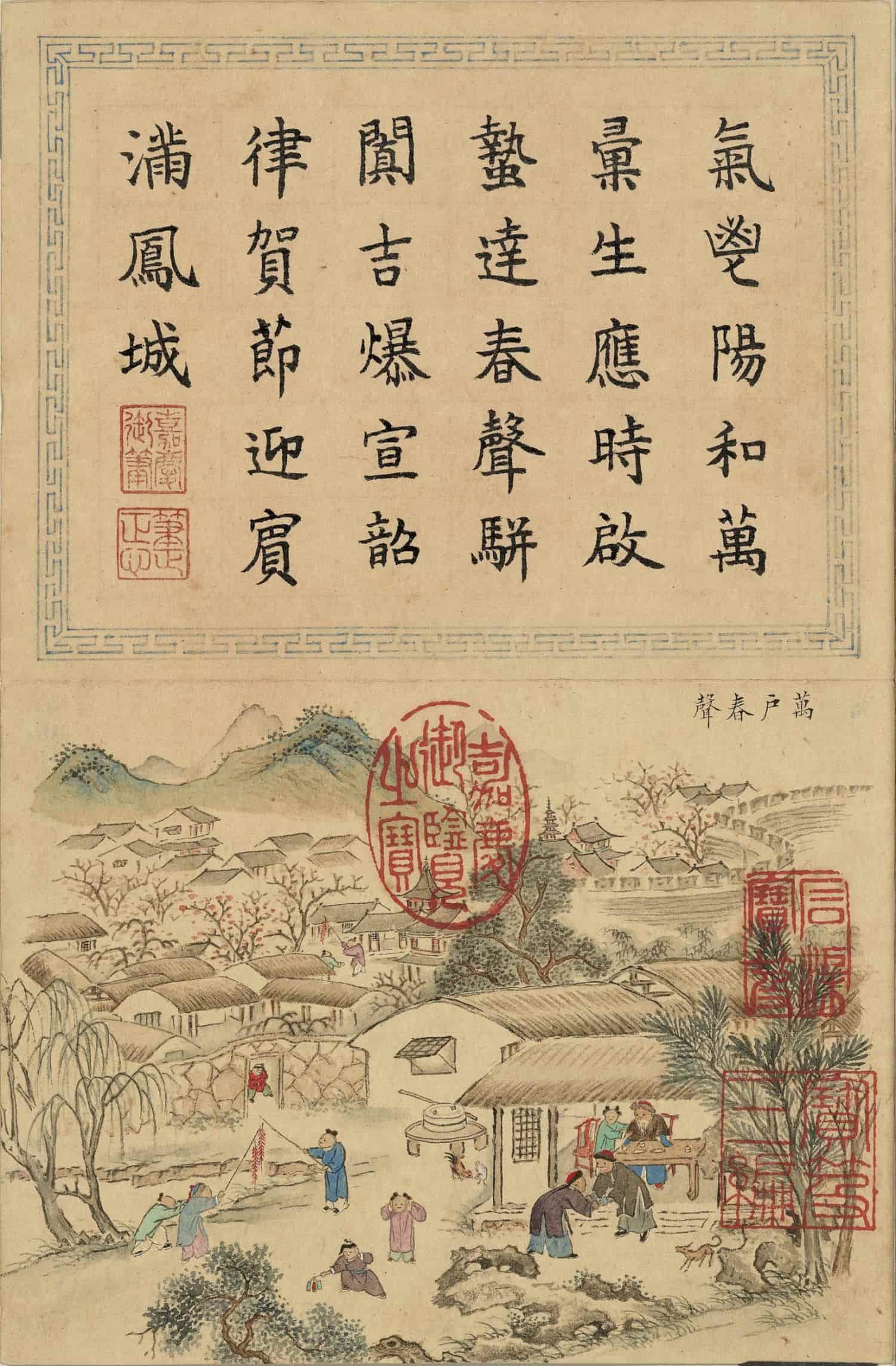
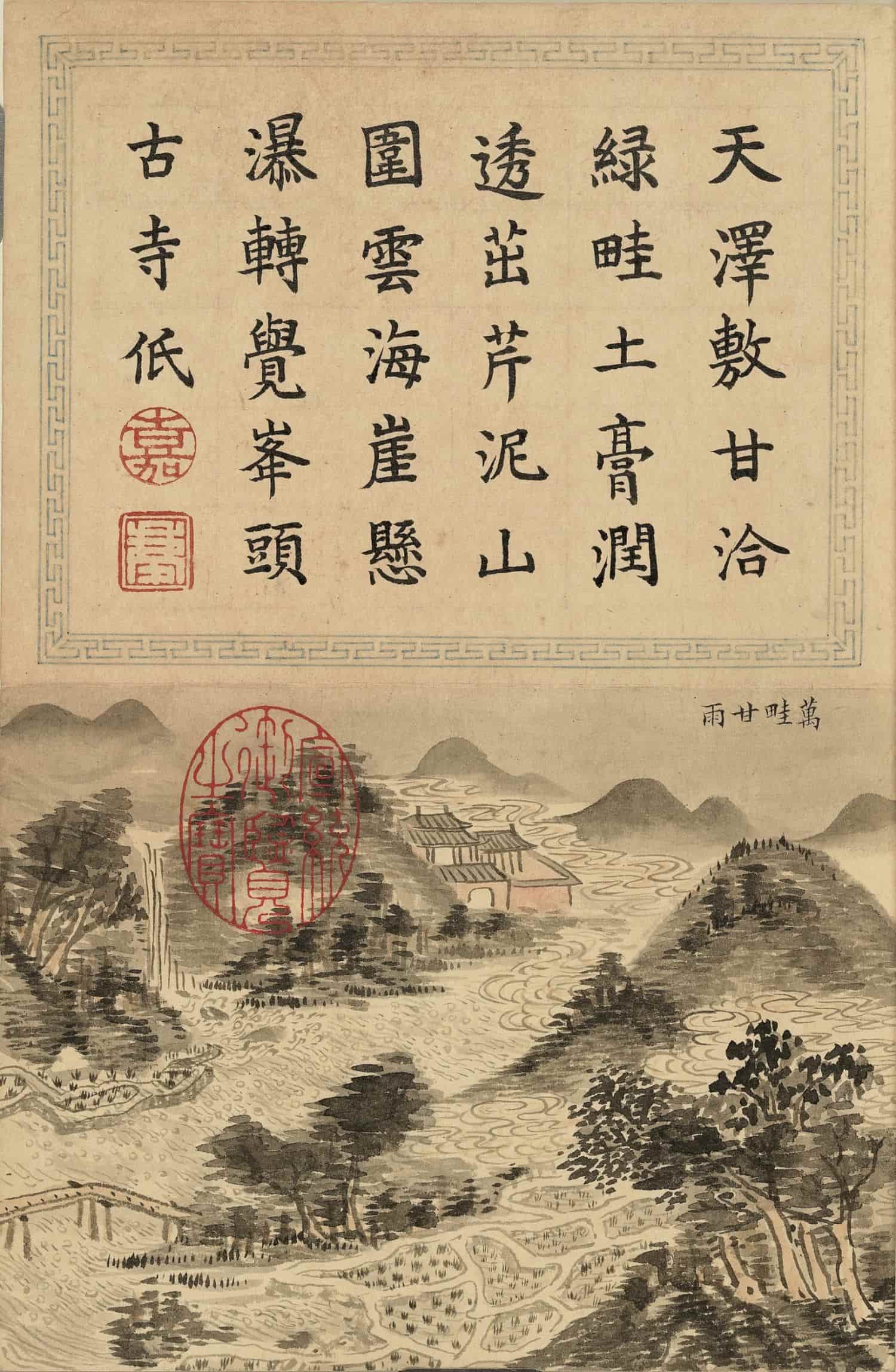
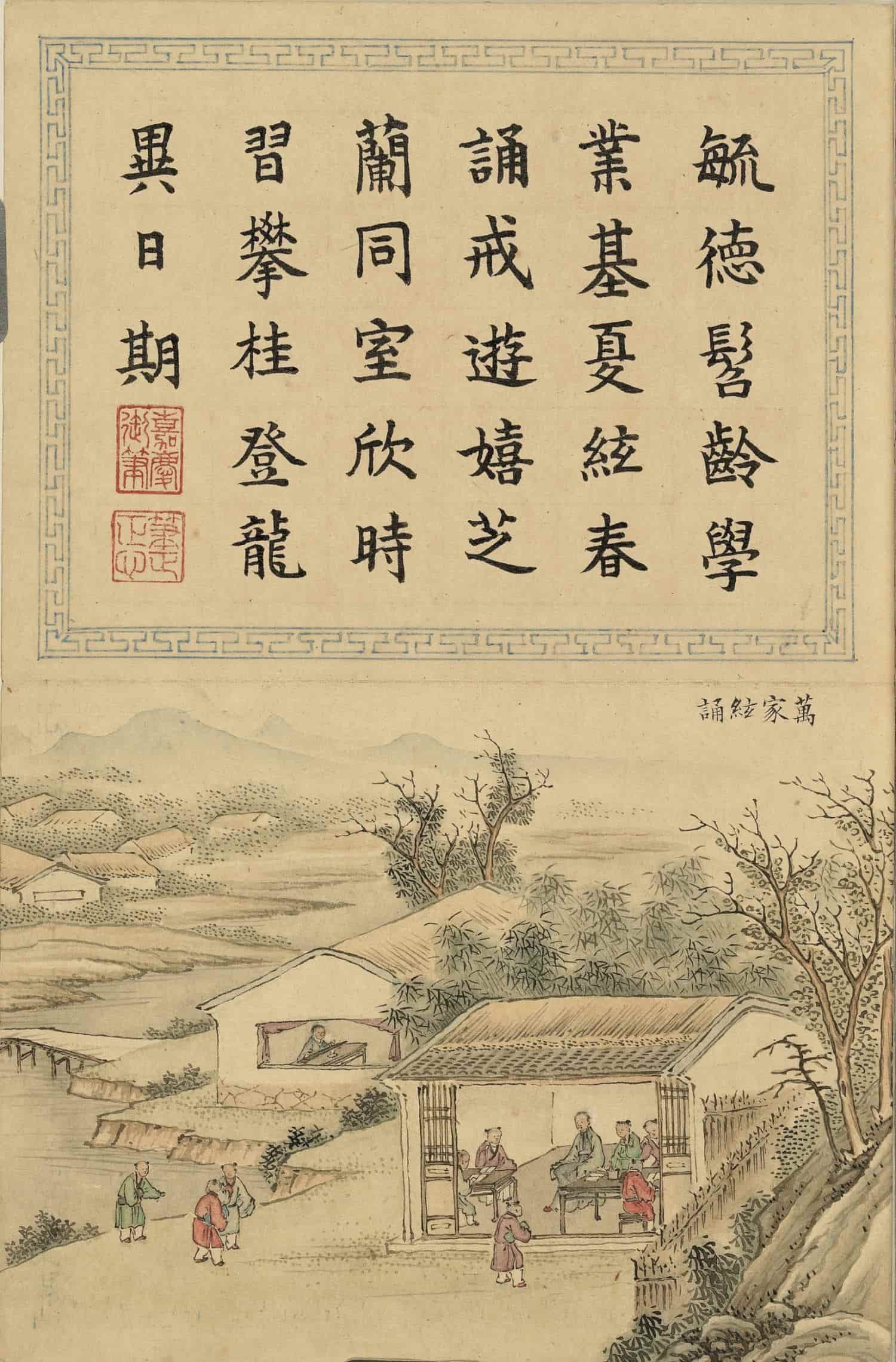
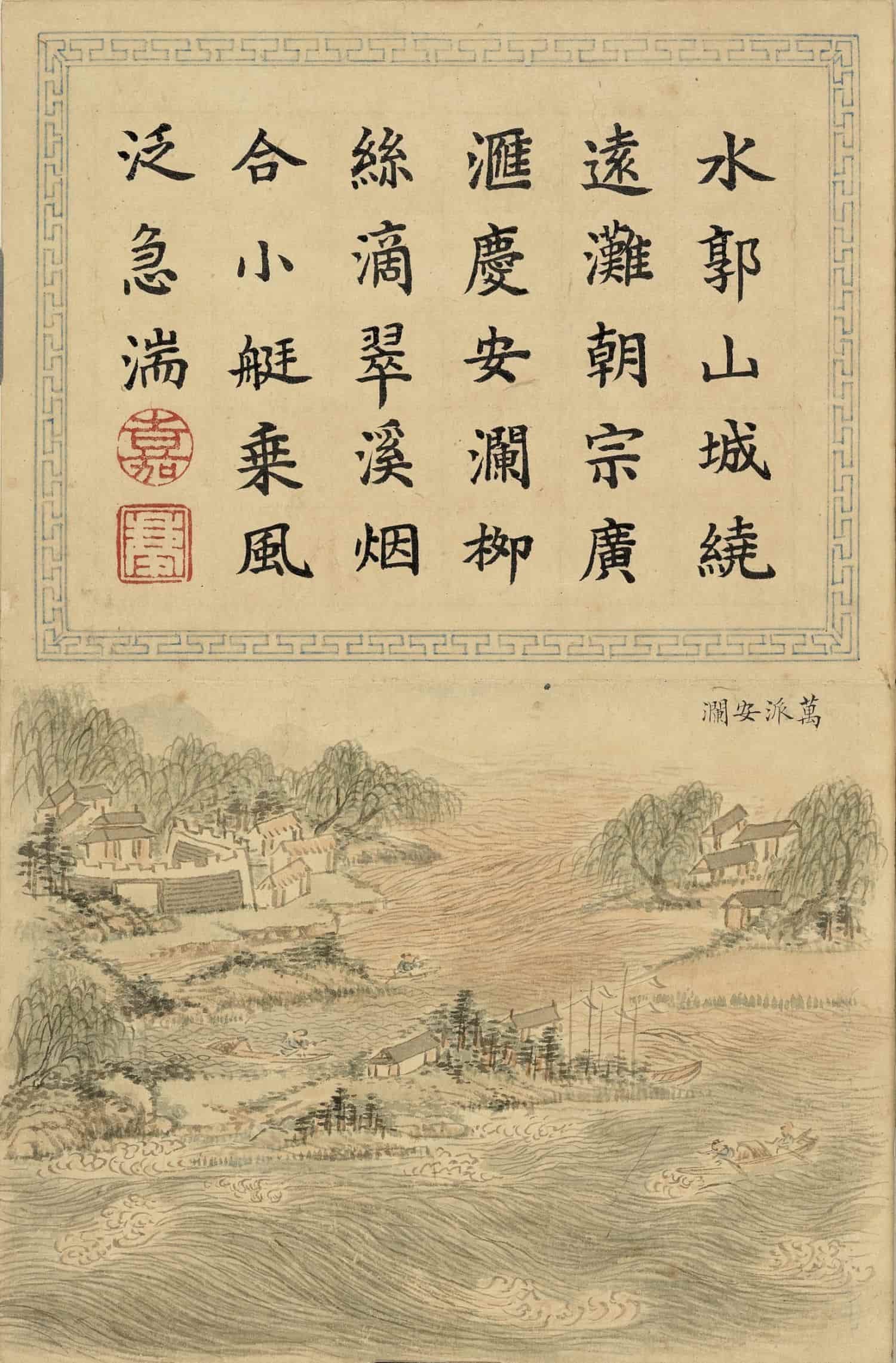
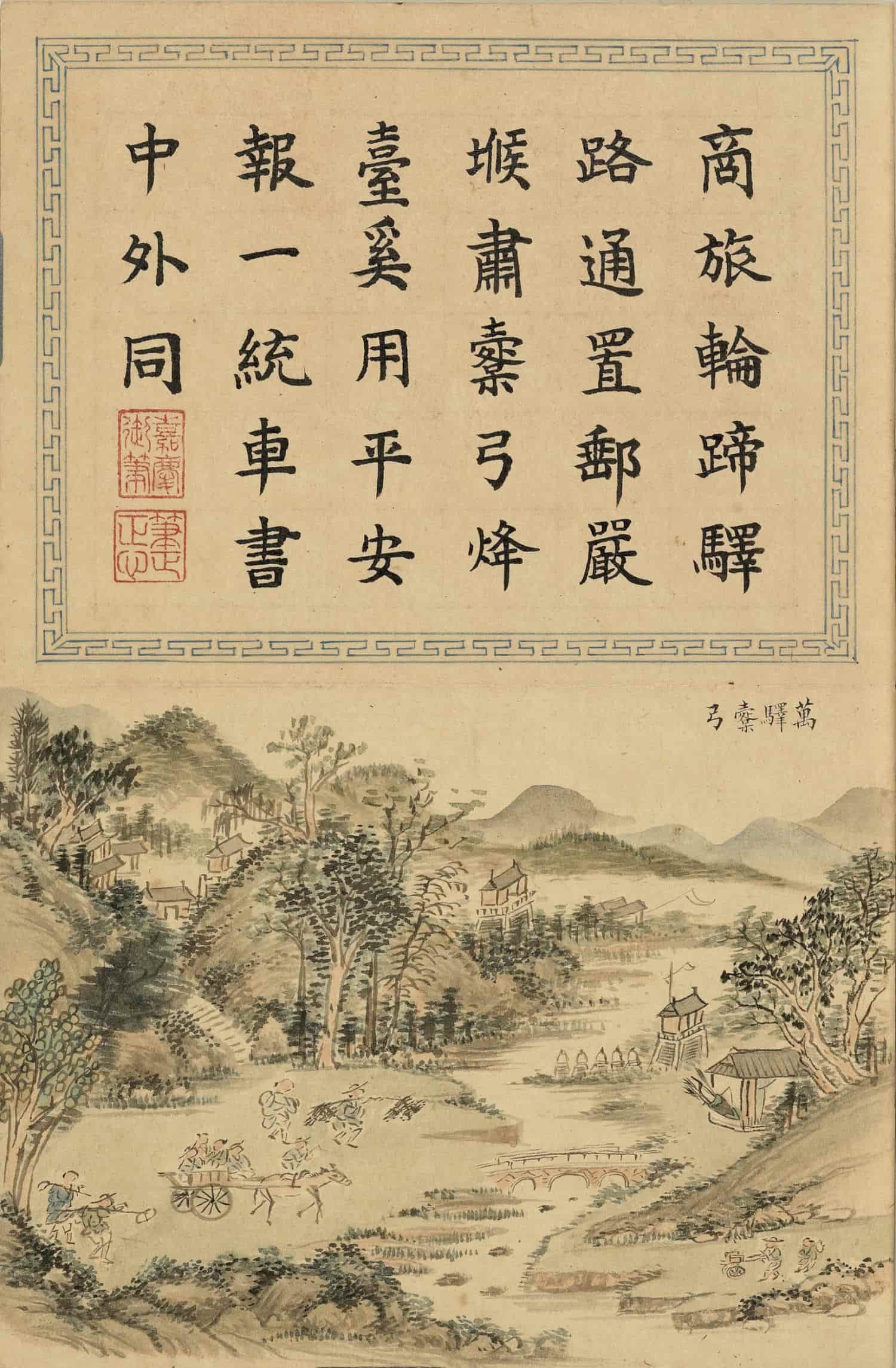
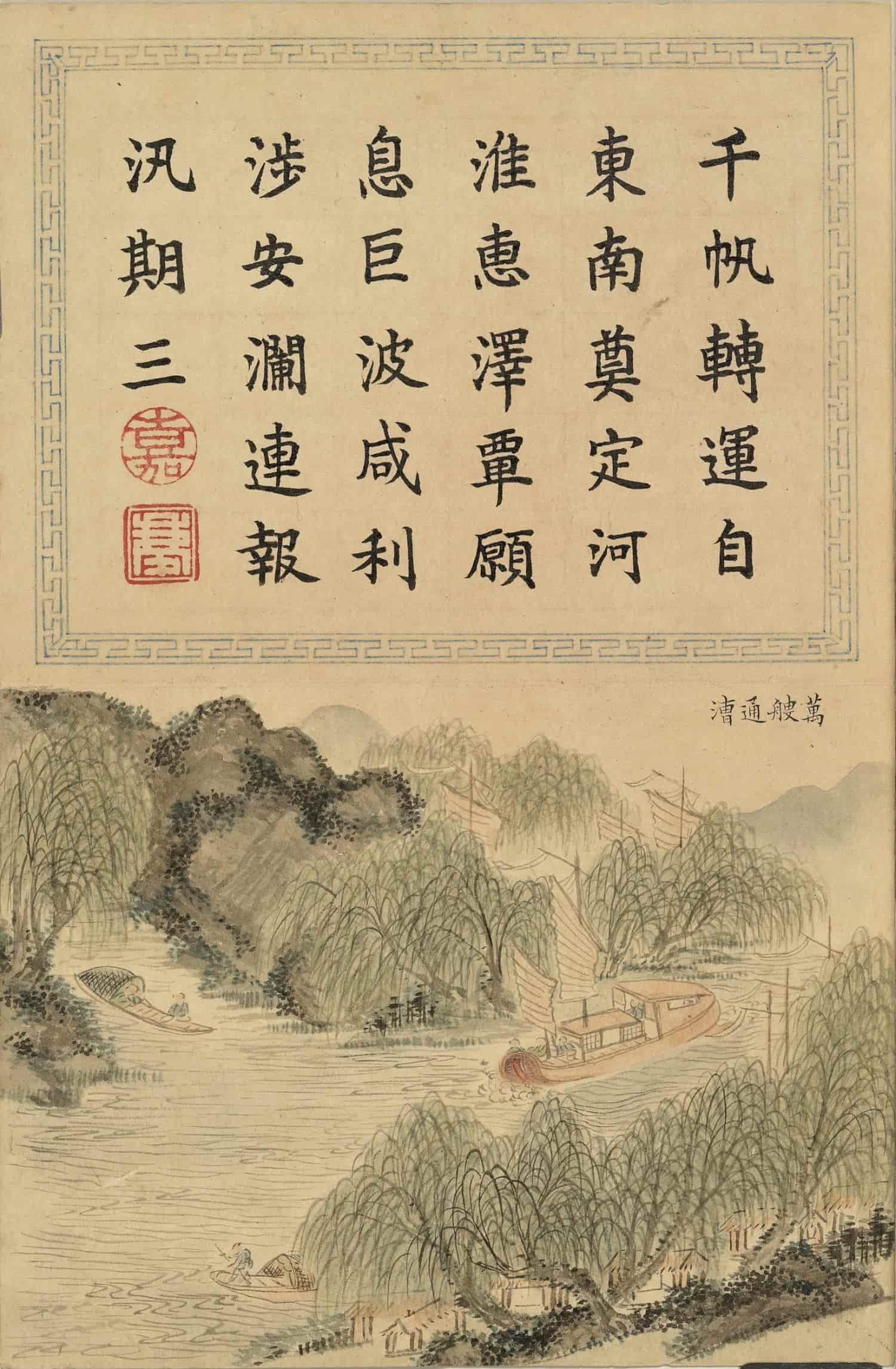
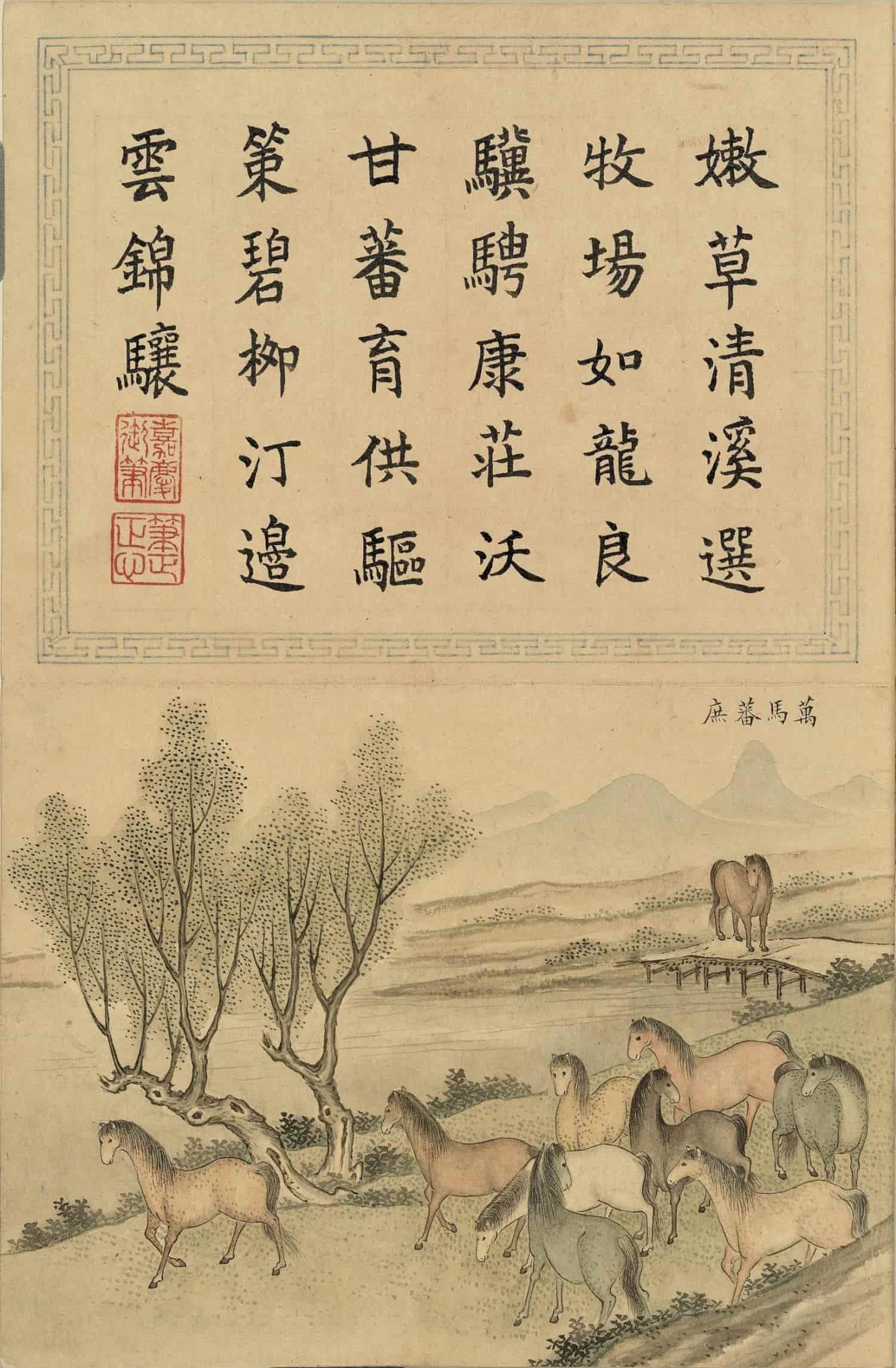
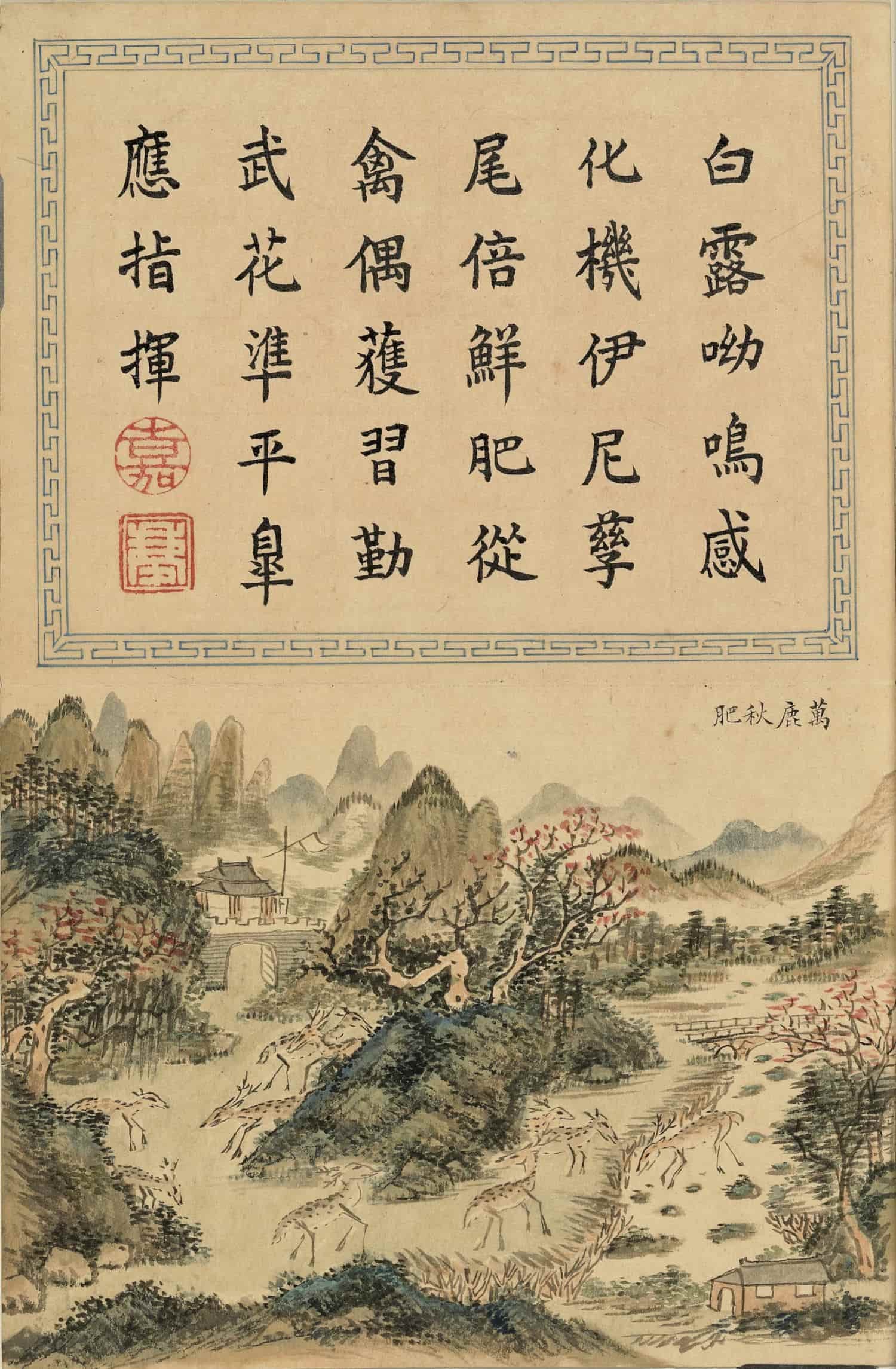
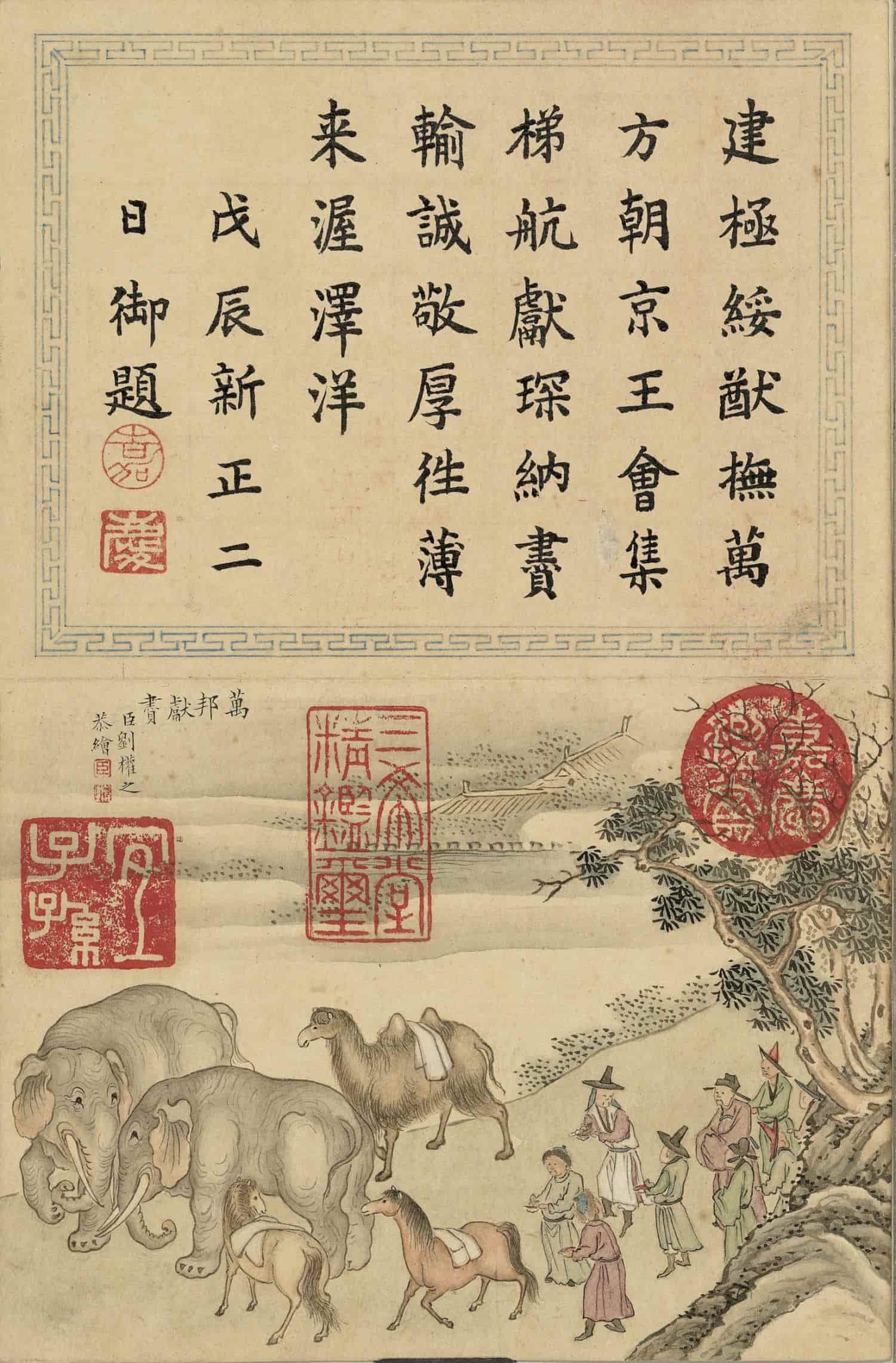
评价
目前还没有评价